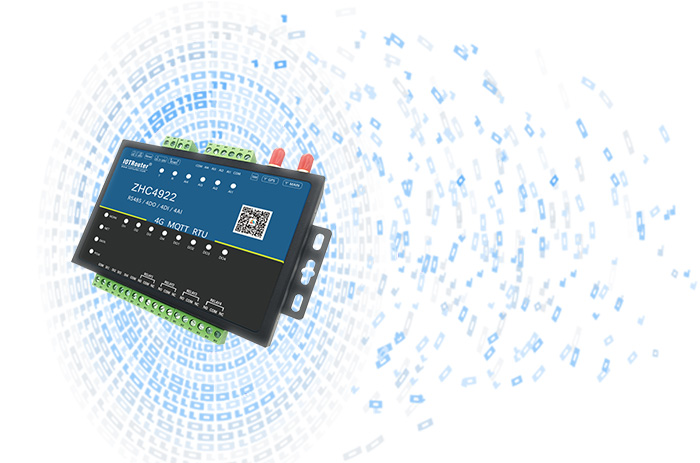The wireless communication module is the information portal for all types of smart terminals to access the Internet of Things. It is a key link connecting the perception layer and network layer of the Internet of Things. It is the underlying hardware and is irreplaceable. All device data generated by IoT perception layer terminals need to be aggregated to the network layer through wireless communication modules, and then the devices can be remotely managed and controlled through the cloud management platform. At the same time, through data analysis, management efficiency can be improved.


The main functions of the wireless communication module:
● Communication function: supports GPRS and short message dual-channel data transmission; supports multi-center data communication.
● Collection function: Collect serial device data, such as serial instruments, collectors, PLC, etc.
● Remote management function: supports remote parameter setting and program upgrade.
Features of wireless communication module:
● Support transparent data transmission.
● Support domain name resolution function.
● Support various configuration software and user-developed software systems.
● Built-in software and hardware watchdog, no crash or disconnection.
● Industrial-grade design, suitable for harsh outdoor environments.
In comparison, using a wireless data transmission module to establish a dedicated wireless data transmission method has the following advantages over other methods:
Construction project cycle is short
When remote sites that are several kilometers to tens of kilometers apart are to be connected and communicated with each other, wired methods must be used to erect long-distance cables or dig long cable trenches. This project cycle may take several months. The method of using data transmission modules to establish dedicated wireless data transmission only requires the erection of antennas of appropriate height, and the project cycle only takes a few days or weeks. In contrast, the wireless method can quickly establish a communication link, and the project The cycle time is greatly shortened.
Good adaptability
The limitations of wired communication are too great. When encountering some special application environments, such as special geographical environments such as mountains, lakes, and forest areas, or application environments where wiring is difficult such as moving objects, the wired network will be affected. Wiring engineering has extremely strong constraints, and using wireless data transmission modules to establish dedicated wireless data transmission methods will not be subject to these restrictions. Therefore, using wireless data transmission modules to establish dedicated wireless data transmission methods will be better and more extensive than wired communications. The adaptability is almost not limited by geographical environment.
Good scalability
After users set up a communication network, they often add new devices due to system needs. If the wired method is used, re-wiring is required, the construction is more troublesome, and the original communication lines may be damaged. However, if a wireless data transmission station is used to establish a dedicated wireless data transmission method, only the new equipment and the wireless data transmission station are required. System expansion can be achieved by connecting, which has better scalability.
Cheap cost
The establishment of a wired communication method requires the erection of cables or the digging of cable trenches, which requires a lot of manpower and material resources. However, the use of wireless data transmission stations to establish a dedicated wireless data transmission method does not require the erection of cables or the digging of cable trenches. It only needs to be connected at each terminal. A wireless data transmission station and an antenna of appropriate height are sufficient. In contrast, using wireless data transmission modules to establish a dedicated wireless data transmission method saves manpower and material resources, and the investment is quite economical.
Of course, in some short-distance data communication systems, wireless communication methods are not cheaper than wired methods, but sometimes the actual on-site environment is difficult to wire. Customers will still choose wireless methods to achieve communication based on the needs of the on-site environment.